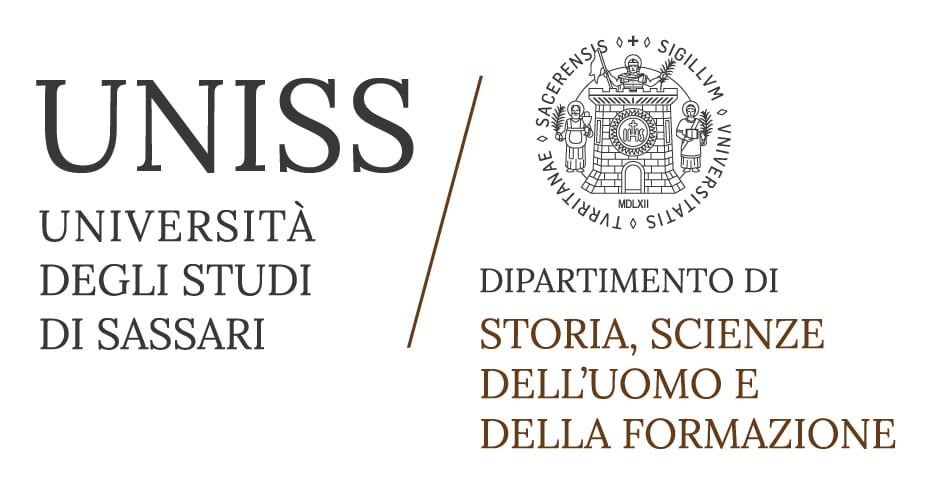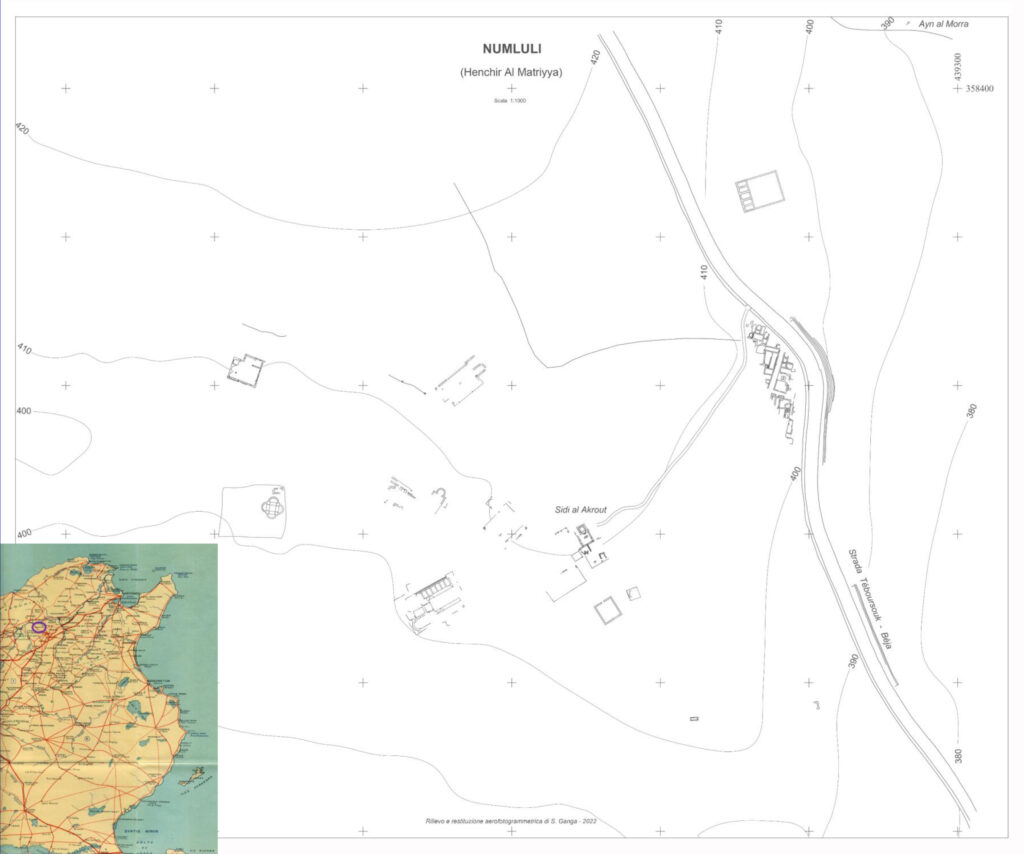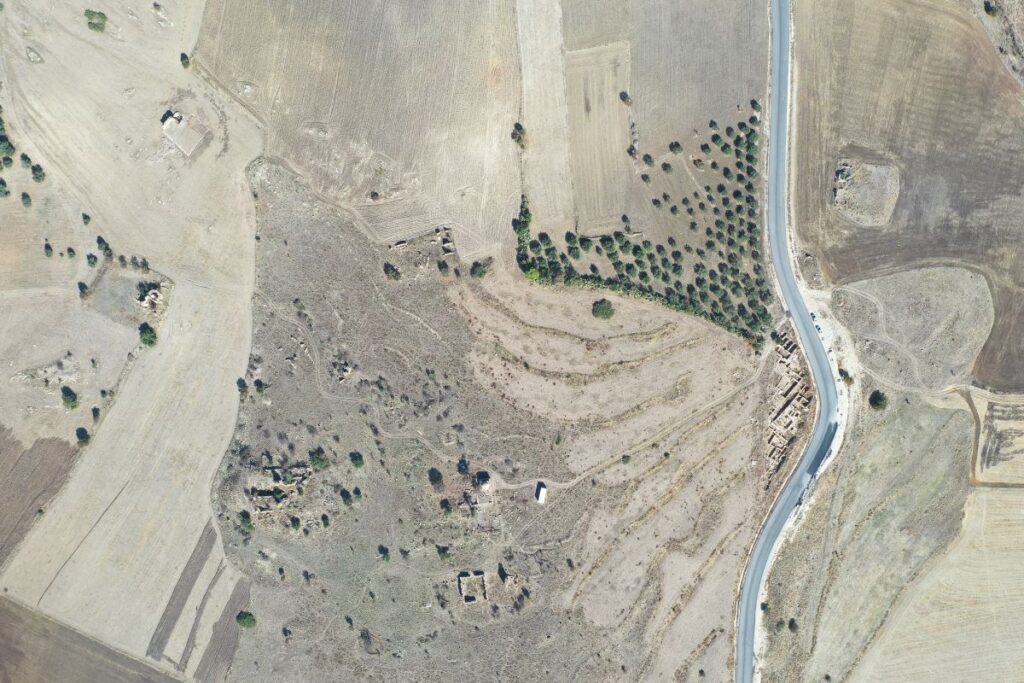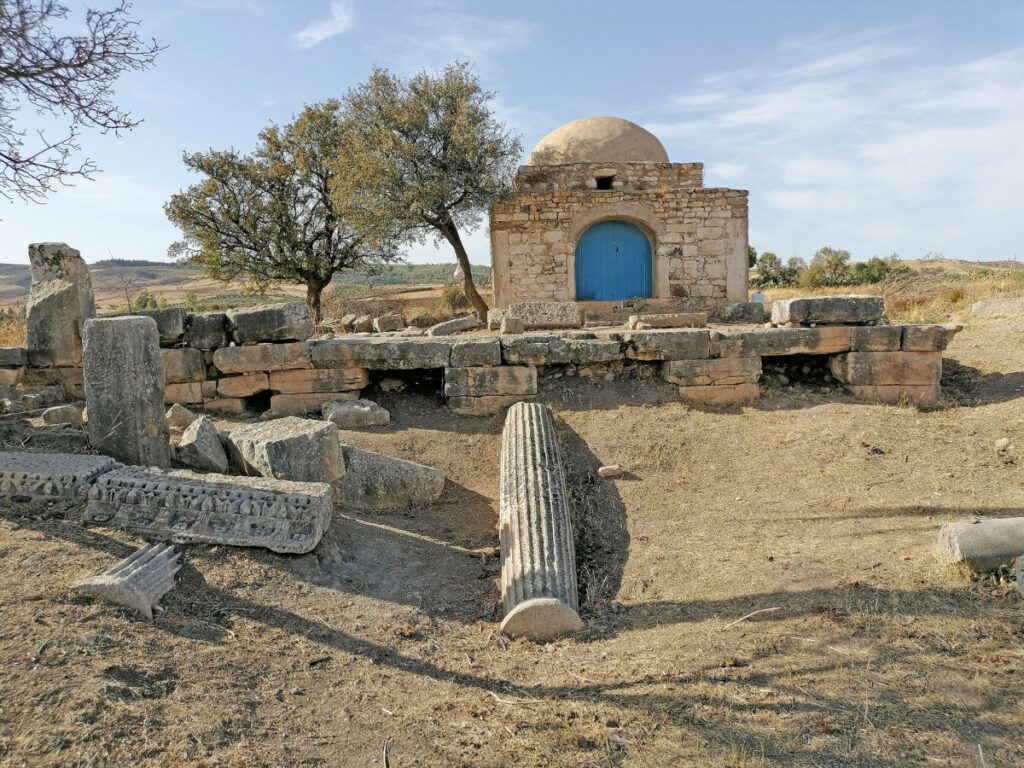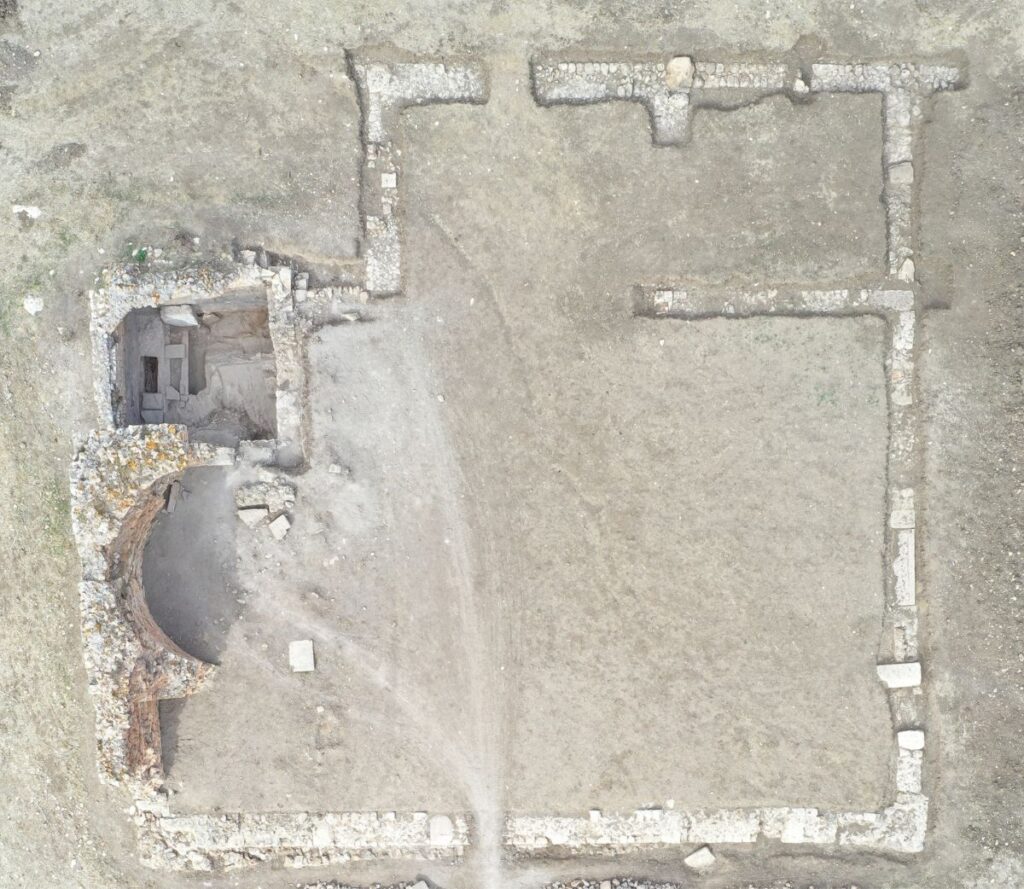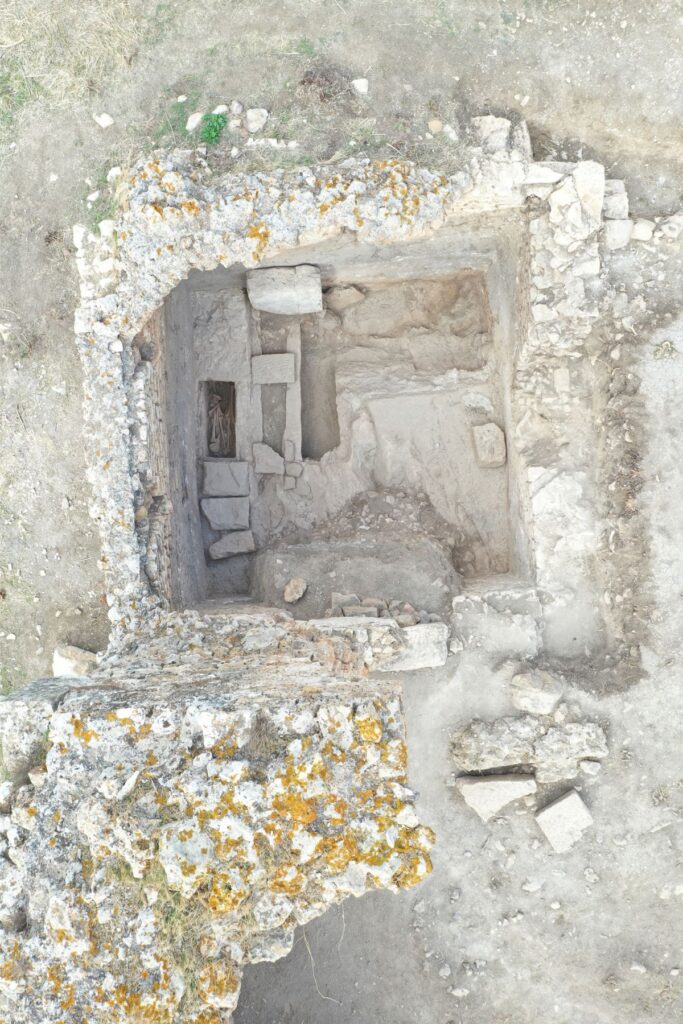Training the Next Generation of Archaeologists in Numluli Tunisia
PROPOSAL FOR AN INTERNATIONAL SUMMER SCHOOL OFFERING FIELD TRAINING FOR ARCHAEOLOGY STUDENTS
Numluli from forum to Christian basilica. The story of a Roman city in transition, training the next generation of archaeologists in Tunisia’s Roman heartland
The municipium of Numluli — corresponding to modern-day El Matria (Governorate of Béja) — is one of the best-preserved Roman cities in northern Tunisia. Although never the subject of extensive archaeological excavations, its standing monuments remain clearly legible and remarkably well preserved. This makes it an ideal setting for the organization of an international Summer School, offering field training for archaeology students from Tunisia, Italy, and other countries.
The forum with its Capitolium and curia, a large courtyard temple, two bath complexes, a martyrium, and an Early Christian basilica are the most significant monuments shaping the urban landscape of Roman Numluli. These will become the focus of both research and student-led archaeological excavation campaigns.
The project, set to run over four years, will devote the first three years primarily to excavation, while the final year will focus above all on conservation, reconstruction, and public presentation. Excavations will target the most representative monumental areas, highlighting both the pagan and Christian phases of the city’s history. In parallel, all public buildings will be documented, and the numerous Latin inscriptions recovered from the site will be studied and catalogued.
Initial work, begun in 2022, has concentrated on the forum square in front of the Temple of Jupiter Capitolinus and on the Early Christian basilica located in the western necropolis — a large three-aisled building paved entirely in mosaic, portions of which are already visible at ground level due to ploughing. These two areas will serve as the initial focus of the excavation. If conditions allow, further excavation may be extended to the curia on the opposite side of the forum, and to the quadrilobate martyrium located not far from the Early Christian basilica.
43000
It will then be possible to plan the subsequent enhancement of the Numluli site, which, given the excellent state of preservation of its structures, is well suited for this purpose, starting with the reconstructions and restorations of the buildings using the original materials.
The focus is mainly on the recovery of the architectural elements of the Capitolium currently preserved in the nearby village of Téboursouk (two column shafts with their bases and three blocks of the frieze-architrave), but also on the numerous other parts present on the site (two more column shafts, capitals, cornices) and all those that will be found during the archaeological excavations. In this way, it will be possible to almost completely reconstruct the temple’s façade.
Located along the new expressway connecting Téboursouk and Béja, the site is easily accessible and well positioned for future visitation. Archaeological trails will therefore be created for visitors, accompanied by explanatory panels in English, French, and Arabic, as well as digital reconstructions to help the public better understand how life in the city developed through the various periods.
The ultimate goal is indeed to bring to life the image of a Roman city, a place where visitors can move among reconstructed monuments, observe changes in the urban layout over time — especially in Late Antiquity with the introduction of Christian buildings — and grasp the tangible legacy of Roman civilization.
In addition to the prompt scientific publication of results, particular attention will also be given to the immediate dissemination of the project’s developments on social media, including through the creation of videos to promote the site, providing real-time updates on the progress of excavations and the most significant discoveries.
Figure captions (below)
Fig. 1. Numluli, general plan.
Fig. 2. Numluli, aerial photograph of the Roman city area.
Fig. 3. The forum of Numluli. On the northern side (right), the podium of the Capitolium with the marabout of Sidi Al Akrout; on the left, the Byzantine fortification and the probable curia.
Fig. 4. The podium of the Capitolium with collapsed architectural elements in front of the façade.
Fig. 5. The complex of the three-aisled Early Christian basilica at the northwestern edge of the city.
Fig. 6. The small mausoleum to the north of the basilica apse with the tombs clearly visible.
Principal Investigators / Collaborators
Alessandro Teatini
Moheddine Chaouali – Maître de Recherche at the Institut National du Patrimoine of Tunis (INP)
Antonio Corda – Associate Professor of Roman History and Latin Epigraphy at the University of Cagliari
Antonio Ibba – Associate Professor of Roman History and Latin Epigraphy at the University of Sassari
Salvatore Ganga – Surveyor (monument surveys)
Fabiola De Rossi – PhD candidate in Archaeology at the University of Sassari and the Pontifical Institute of Christian Archaeology in Rome (P.I.A.C.)
Claudio Farre – Research Fellow in Latin Epigraphy at the University of Sassari
Manuel Mainetti – Undergraduate in Archaeology at the University of Sassari
Dorotea Piano – Undergraduate in Latin Epigraphy at the University of Cagliari
